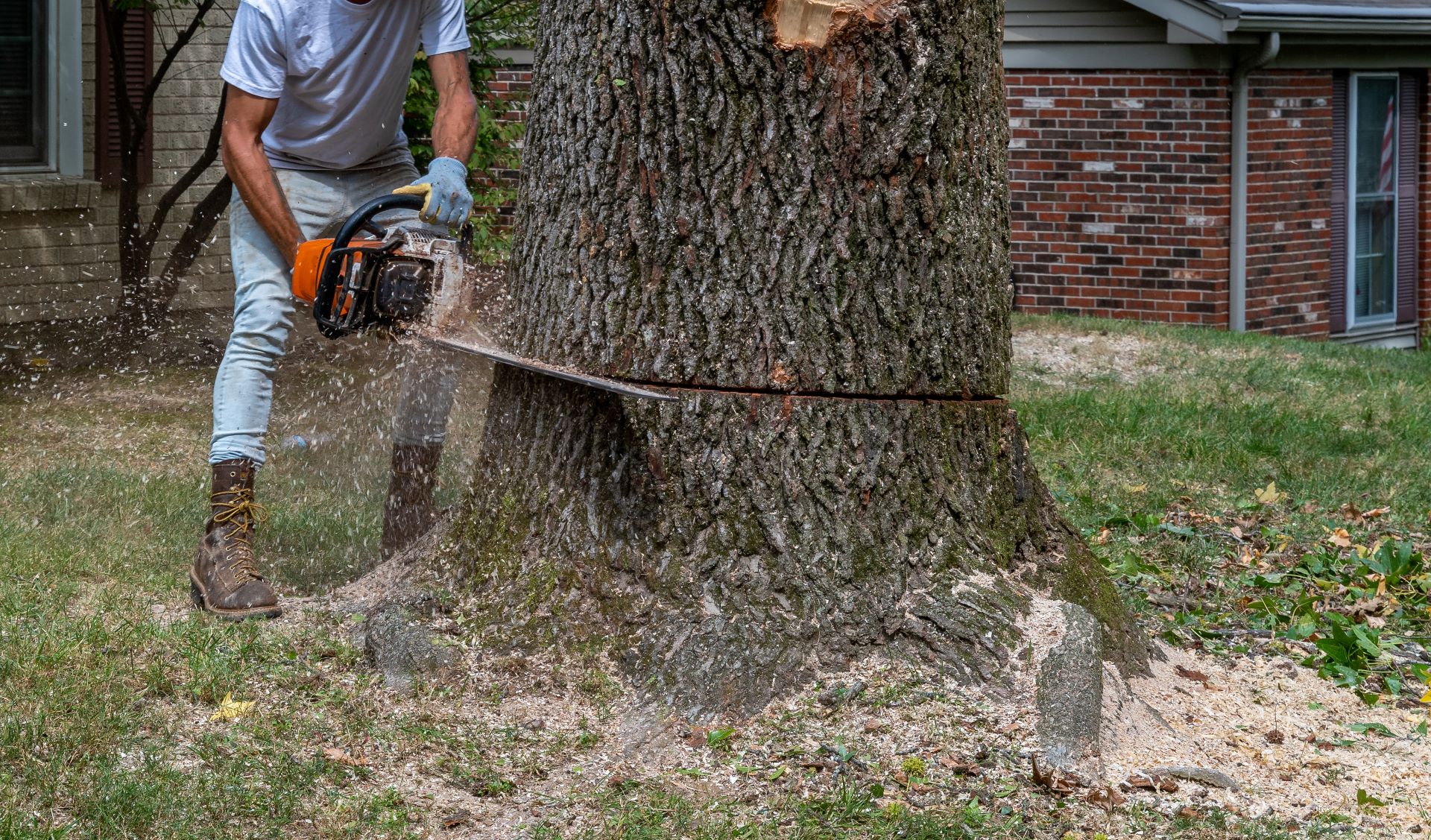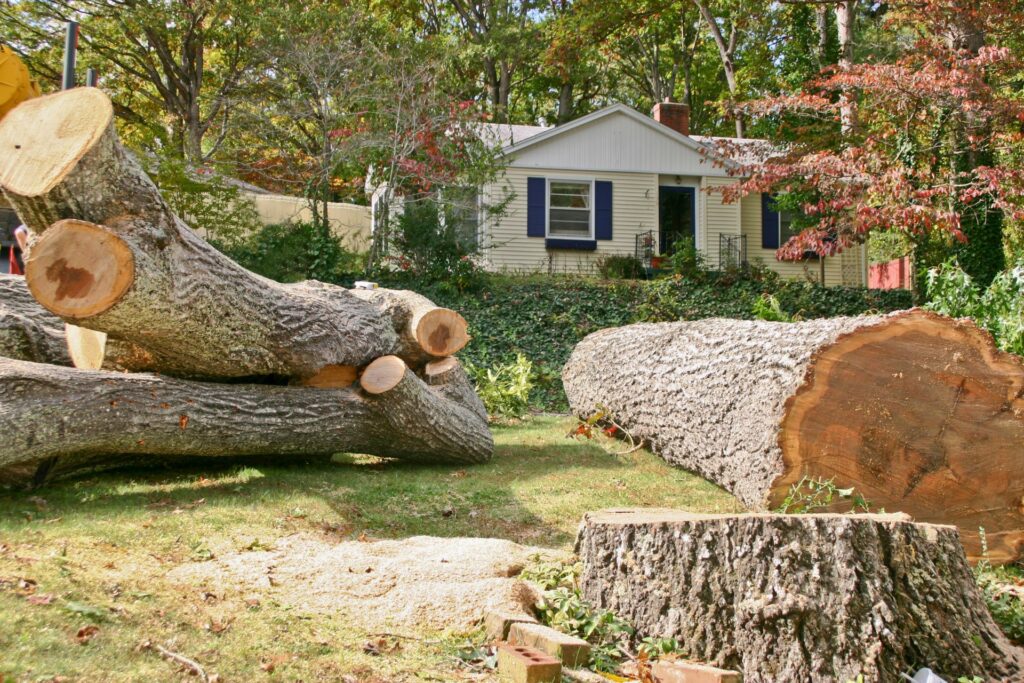A lush green tree in your backyard isn’t only a testament to nature’s grandeur but also a source of countless memories. Trees radiate serenity and provide shade on hot summer days. Yet, just as all things in nature, they, too, have a lifecycle. There comes a time when removal is necessary for safety and aesthetic purposes.
As the seasons change, so do the conditions and considerations for tree removal. Determining the right time doesn’t only concern the tree’s health but also encompasses environmental, legal, and personal aspects. Before hiring Pelfrey Tree Service and the like, this article offers a wealth of knowledge to guide your tree removal decisions. So, read on.
Tree Lifespan: Recognizing The End Time
Just like we monitor our health, trees require consistent observation. As they gracefully mature, their resistance to certain environmental challenges may diminish. Fading leaf color, brittleness of branches, and susceptibility to diseases are often nature’s indicators. However, threats like fungal infections or invasions by pests like the emerald ash borer can hasten their decline. Recognizing these early signs can extend the tree’s life and prevent hazards.
With this foundational knowledge, it’s equally essential to gauge the most appropriate time of the year for tree removal.
Seasonal Recommendations: Overview Of Optimal Removal Times
Each season uniquely influences tree removal.
- Winter: A dormant tree has conserved its energy, making it less prone to shock from removal. The barren branches also allow for better visibility, ensuring a cleaner job.
- Autumn: This transitional period is ideal. With trees shedding leaves and conserving energy for the upcoming cold, it’s a strategic time, especially before winter storms that might turn weak branches into hazards.
- Spring: This rejuvenation period sees trees brimming with life. Active sap flow means more moisture, making the wood heavier and slightly more challenging to cut and transport.
- Summer: The lush canopy, although beautiful, makes it harder to navigate. Plus, this is the peak time for many nesting species, requiring an extra dose of caution.
Align removal strategies with the changing seasons. Yet, the seasonal context is only one layer; looking into the tree’s immediate environment and individual characteristics adds depth to the decision-making process.
Additional Factors: Beyond Basic Seasonality
Consider not just the tree but also its surroundings during removal.
- Type Of Tree: For instance, willows, known for their water-loving properties, might have roots that are entangled with underground water lines, posing removal challenges.
- Accessibility: Urban settings might mean overhead power lines, close-knit structures, and less maneuvering space, demanding specialized equipment or techniques.
- Weather Conditions: A clear, calm day is ideal. Sudden showers can render the ground slippery, and gusty winds can sway branches unpredictably.
- Local Wildlife: Be it squirrels darting around or a hive tucked away in a nook, it’s essential to ensure minimal disruption to the inhabitants.
But to truly offer trees the best care, prevention is better than cure. A strong foundation in tree health practices can save us from many premature removals.

Tree Health: Prevention And Maintenance Strategies
Healthy trees resist diseases and pests better. Regular interventions can save you the hassle of untimely removals.
- Regular Inspections: Look for mushroom growth at the base or cavities in the trunk—both can indicate underlying issues. For instance, the sudden appearance of honey fungus mushrooms at the base might indicate root rot.
- Mulching: Beyond moisture retention, mulching can prevent mechanical injuries from lawn equipment.
- Watering: Young trees benefit from deep watering, ensuring their roots grow deep and anchor firmly.
But when dilemmas get intricate, it’s the expertise of professionals that can guide us through.
Professional Arborist: The Value Of Expertise
Arborists offer invaluable expertise. Arborists are trained to see things the layperson might miss:
- Diagnosis: They employ tools and techniques, like resistographs, to determine internal trunk decay that might not be visible to the naked eye.
- Treatment Recommendations: Based on the specific species and issue at hand, they can suggest tailored treatments. For example, an oak infected with oak wilt might need specific antifungal treatments not suitable for other tree species.
- Safety Protocols: With their specialized equipment and training, they ensure extracting or pruning is done safely, minimizing potential damage. Arborists might use specialized harnesses and pulleys to safely prune large branches without harming the tree or causing harm to nearby structures.
While the technical aspects are vital, it’s equally important to view tree removal within the larger environmental context.
Environmental Impact: Understanding The Bigger Picture
Trees are crucial to our ecosystem. Their removal impacts not just your backyard but also the environment.
- Habitat Disruption: From insects to birds, many organisms lose their homes with a tree’s removal.
- Soil Erosion: A tree’s root system anchors the soil, preventing runoff, especially during rains.
- Climate Regulation: By providing shade, trees reduce the need for air conditioning, indirectly conserving energy.
Beyond the environmental aspect, trees weave into the social fabric of our communities, leading to considerations that need to be navigated with sensitivity.
Legalities And Neighbors: Navigating Removal Concerns
Trees have both ecological and social impacts.
- Safety Concerns: A neighbor might have reservations about a tree that appears unstable, fearing property damage.
- Boundary Issues: Ensuring that the tree doesn’t straddle property lines can save future legal hassles.
- Local Ordinances: Many cities champion green initiatives, placing restrictions on indiscriminate removal procedures. Always being informed is key.
This communal perspective further underscores the importance of making well-informed decisions.
Informed Decisions: The Essence Of Timely Tree Removal
Making an informed decision about tree removal involves considering the tree’s health and lifespan, as well as seasonal recommendations. In addition, the expertise of arborists and knowledge of relevant legalities and environmental impacts ensure timely and appropriate action.






